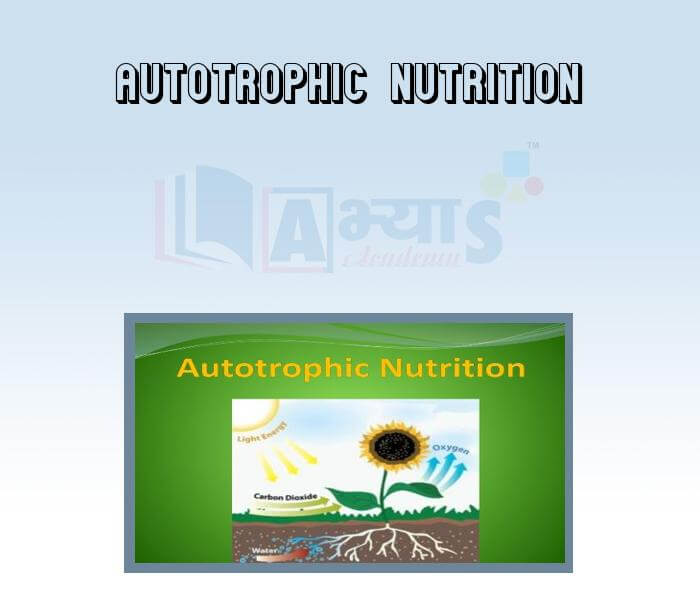Autotrophic Nutrition










Autotrophic Nutrition
Autotrophic Nutrition
The mode of nutrition in which an organism makes its own food is called autotrophic nutrition. All green plants making own food by the process of photosynthesis. Green plants are called producers or Autotroph, as they are capable of preparing their own food with the help of some non-living factors of the environment. Green plants take carbon dioxide from the air and water and minerals from the soil through the roots. The green coloured pigment called chlorophyll present in the leaves of plants traps energy from the sunlight.
This kind of nutrition in which green plants make their own food by utilizing simple substances from the environment is called autotrophic nutrition. The process by which plants make their food is called photosynthesis (photo: light; synthesis: to combine). If the autotrophs prepare their own food by utilising chemical energy they are called chemoautotrophs.
Read the following statements carefully and choose the correct options.
| |||
| Right Option : C | |||
| View Explanation | |||
The process by which plants make their food is called ______________________. | |||
| Right Option : B | |||
| View Explanation | |||
The mode of nutrition in which an organism makes its own food is called _________________________ nutrition. | |||
| Right Option : A | |||
| View Explanation | |||
Students / Parents Reviews [10]
I have spent a wonderful time in Abhyas academy. It has made my reasoning more apt, English more stronger and Maths an interesting subject for me. It has given me a habbit of self studying

Yatharthi Sharma
10thIt was a good experience with Abhyas Academy. I even faced problems in starting but slowly and steadily overcomed. Especially reasoning classes helped me a lot.

Cheshta
10thA marvelous experience with Abhyas. I am glad to share that my ward has achieved more than enough at the Ambala ABHYAS centre. Years have passed on and more and more he has gained. May the centre flourish and develop day by day by the grace of God.

Archit Segal
7thIt has a great methodology. Students here can get analysis to their test quickly.We can learn easily through PPTs and the testing methods are good. We know that where we have to practice

Barkha Arora
10thOne of the best institutes to develope a child interest in studies.Provides SST and English knowledge also unlike other institutes. Teachers are co operative and friendly online tests andPPT develope practical knowledge also.

Aman Kumar Shrivastava
10thMy experience was very good with Abhyas academy. I am studying here from 6th class and I am satisfied by its results in my life. I improved a lot here ahead of school syllabus.

Ayan Ghosh
8thAbout Abhyas metholodology the teachers are very nice and hardworking toward students.The Centre Head Mrs Anu Sethi is also a brilliant teacher.Abhyas has taught me how to overcome problems and has always taken my doubts and suppoeted me.

Shreya Shrivastava
8thMy experience with Abhyas academy is very good. I did not think that my every subject coming here will be so strong. The main thing is that the online tests had made me learn here more things.

Hiya Gupta
8thAbhyas Methodology is very good. It is based on according to student and each child manages accordingly to its properly. Methodology has improved the abilities of students to shine them in future.

Manish Kumar
10thMy experience with Abhyas is very good. I have learnt many things here like vedic maths and reasoning also. Teachers here first take our doubts and then there are assignments to verify our weak points.
